Vietnamese sesame balls, locally knowns as bánh cam, are delightful sweet treats with crispy outer shells wrapped around sweet mung bean paste filling. They have been one of the most well-loved street foods in the country forever and were mentioned by CNN in their list of 30 best fried foods in the world!
If you love trying out new and exciting desserts, this is the recipe for you. They work great as snacks, too, so you’ll also have something tasty to munch on during the day. And if you want, you can also enjoy them for breakfast. Sounds good? Let’s learn how to make these delicious sesame balls!
What Is Vietnamese Bánh Cam?
Bánh cam is a traditional Vietnamese sweet treat featuring a crunchy shell made from glutinous rice flour and a mung bean filling. The dough is shaped into ball forms, fried to perfection, then rolled through sugar syrup and sesame seeds.
Bánh cam literally translates to “orange cake”, but don’t expect to find any orange flavor in these treats. In fact, this name is simply a reference to their appearance, which somewhat resembles an orange. In Northern regions, the locals call this dessert and snack as bánh rán, meaning “fried cake”.
Some people believe that these Vietnamese balls is inspired by jian dui, a Chinese fried pastry with a similar shape. However, Jian Dui’s filling typically consists of lotus paste, red bean paste, or sweet black bean paste.
Which Tools Do You Need to Make Bánh Cam?
First, let’s go over all the tools you need to cook this recipe. The good thing is that all of them are basic kitchenware that you should already have.
What Are the Ingredients For Bánh Cam?
The ingredients listed below will allow you to make the perfect Vietnamese bánh cam with ease.
How To Prepare Bánh Cam Properly?
Already gathered all the needed tools and ingredients? Okay! Let’s start making your delicious bánh cam with these 6 steps.
Step 1: Prepare The Ingredients
Soak the peeled split mung beans in warm water for 1 to 2 hours.
Next, cook 1 cup of water with 1.4 ounces of sugar to dissolve it. Alternatively, you can mix the sugar with warm water. Afterward, allow the mixture to cool.
Step 2: Make The Dough
Sift and combine these in a bowl, including:
Sifting the flour will remove any lumps, resulting in a smoother dough.
Add cooking oil to the flour mixture, then gradually pour in the sugar water. Mix well.
Note
Do not add the sugar water all at once, as doing this might make the dough too wet. Instead, pour it in little by little and decide whether the amount used is enough. Ideally, your dough should have the consistency of play dough.
Mix the dough for about 10 minutes or until smooth. Cover the mixing bowl with plastic wrap and allow your dough to rest for 2 to 4 hours.
Step 3: Make The Filling
Drain the mung beans and add them to a saucepan. Then, cook them with 0.85 cups of water for 30 minutes over low heat. Cover the saucepan to prevent the water from evaporating, which causes the beans to be burned.
Once the beans have tenderized, add the below components to the saucepan.
Stir well until the mixture is smooth.
Step 4: Shape The Sesame Balls
Shape the dough into balls (about 1 ounce in weight and 1 inch in diameter). Likewise, shape the filling into balls that are a little smaller than the dough balls (about 0.8 ounces in weight).
Repeat the above step until you run out of dough and filling. You should be able to make 20 to 24 balls with this recipe.
Coat your hands with a layer of flour so the dough doesn’t stick to them.
Flatten the dough ball using your palm and add the filling in the middle. Roll the dough into a ball once again, ensuring the shell wraps around the filling completely and evenly.
Repeat these steps for the rest of the ingredients.
Step 5: Fry The Sesame Balls
Heat about 1 cup of cooking oil in a frying pan. The oil doesn’t need to get too hot, as it will splatter when you add the sesame balls.
Put the sesame balls one by one into the pan. Fry them until golden brown on all sides.
Once cooked, transfer the balls onto a plate lined with paper towels to get rid of the excess oil.
Note
There’s no need to add all the sesame balls at once. If you overfill the pan, the balls might stick together, and you won’t be able to flip them easily. Instead, cook them in multiple batches.
Step 6: Make The Sugar And Sesame Glaze
Cook 1 cup of water with some ginger for 5 minutes on low heat, then remove the ginger. Add about 7 tablespoons of sugar and stir well. Once the sugar has dissolved, add the roasted sesame seeds and continue to stir until the glaze thickens slightly.
Note
Avoid overcooking the sugar syrup and sesame seeds, as the sugar can solidify and become overly sweet.
Roll these balls over the sugar and sesame glaze to coat.
Enjoy your delicious Vietnamese sesame balls with herbal or green tea to balance their sweetness.
How To Enjoy Bánh Cam?
Bánh cam makes for excellent desserts or snacks. Many people, especially students, love having them for a quick, on-the-go breakfast, too. If you have some time to spare, brew yourself a cup of Vietnamese iced coffee or tea, and enjoy your sweet treats with it.
In Vietnam, you can find many street vendors selling them on the street. Since they are so cheap, the locals often buy a bunch of them. And to be honest, it’s hard to stop with just one bánh cam!
The Best Way To Store And Make Bánh Cam In Advance
Storing leftover bánh cam is very straightforward. Simply put them in an airtight container and refrigerate them. The sesame balls will stay good for 1 to 2 days. When you want to serve them, pop them in a microwave or toaster oven for about a minute or briefly refry them.
If you want to make this dish ahead of time, I recommend preparing the dough and storing it uncooked in a refrigerator. You can keep them for a couple of days this way.
Other Variations of Bánh Cam To Try Out
The recipe I’ve provided will yield the classic version of these Vietnamese sesame balls. But wait! There are other variations that you can check out as well.
FAQs
Below you will find some frequently asked questions regarding these Vietnamese sesame balls. Give them a read to learn more about this Vietnamese snack and dessert.
Why The Wait? Try Vietnamese sesame Balls Today!
Crunchy on the outside and chewy and soft on the inside, bánh cam is an excellent dessert or snack that people of all ages will adore. More importantly, making it is a total breeze if you follow my recipe. So what are you waiting for? Give this treat a try right away!
Do you have any further questions about today’s recipe? If so, please comment below, and I’ll try my best to answer them. In addition, you can show your love for Vietnamese sesame balls by giving the post a good rating and sharing it with others. Thank you for reading, and I’ll see you again soon!
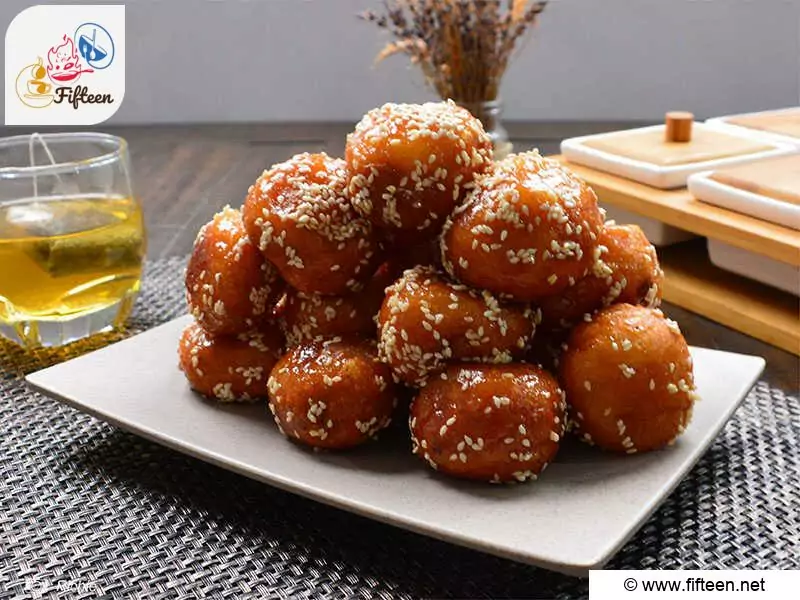
Bánh Cam Recipe (Vietnamese Sesame Balls)
Equipment
- Non-stick skillet
- Mixing Bowls
- Tongs
- Food Wrap
- Sieve
Ingredients
- 10.5 ounces glutinous rice flour
- 1 ounce rice flour
- 0.3 ounce baking powder
- 5.3 ounces peeled split mung beans
- 6.3 ounces sugar
- 0.7 ounces roasted (white or black) sesame seeds
- 1.8 ounces grated coconut (optional)
- 1 teaspoon salt
- 0.7 fluid ounces cooking oil
- 0.5 ounces ginger slices
- 21 fluid ounces water
Instructions
- Soak the peeled split mung beans in warm water for 1 to 2 hours.
- Next, water with sugar until the sugar fully dissolves.
- Sift and combine the glutinous rice flour, rice flour, and baking powder in a mixing bowl.
- Add cooking oil to the flour mixture, then gradually pour in the sugar water. Mix well.
- Mix the dough for about 10 minutes or until smooth. Cover the mixing bowl with plastic wrap and allow your dough to rest for 2 to 4 hours.
- Drain the mung beans and add them to a saucepan. Cook them with water for 30 minutes over low heat. Cover the saucepan to prevent the water from evaporating, which causes the beans to be burned.
- Once the beans have tenderized, add salt, grated coconut (if using), and sugar to the saucepan. Stir well until the mixture is smooth.
- Shape the dough into balls (about 1 ounce in weight and 1 inch in diameter). Likewise, shape the filling into balls that are a little smaller than the dough balls. Repeat the above step until you run out of dough and filling. You should be able to make 20 to 24 balls with this recipe.
- Coat your hands with a layer of flour so that the dough doesn't stick to them. Flatten the dough ball using your palm and add the filling in the middle. Roll the dough into a ball once again, making sure that the shell wraps around the filling completely and evenly. Repeat these steps for the rest of the ingredients.
- Heat cooking oil in a frying pan. Put the sesame balls one by one into the pan. Fry them until golden brown on all sides.
- Once cooked, transfer the balls onto a plate lined with paper towels to get rid of the excess oil.
- Cook water with some ginger for 5 minutes on low heat, then remove the ginger. Add sugar and stir well. Once the sugar has dissolved, add the roasted sesame seeds and continue to stir until the glaze thickens slightly. Roll these balls over the sugar and sesame glaze to coat.
- Enjoy your delicious Vietnamese sesame balls with tea to balance their sweetness.
Video
Notes
- Do not add the sugar water all at once, as doing this might make the dough too wet. Instead, pour it in little by little and decide whether the amount used is enough.
- Ideally, your dough should have the consistency of play dough.
- Avoid overcooking the sugar syrup and sesame seeds, as the sugar can solidify and become overly sweet.


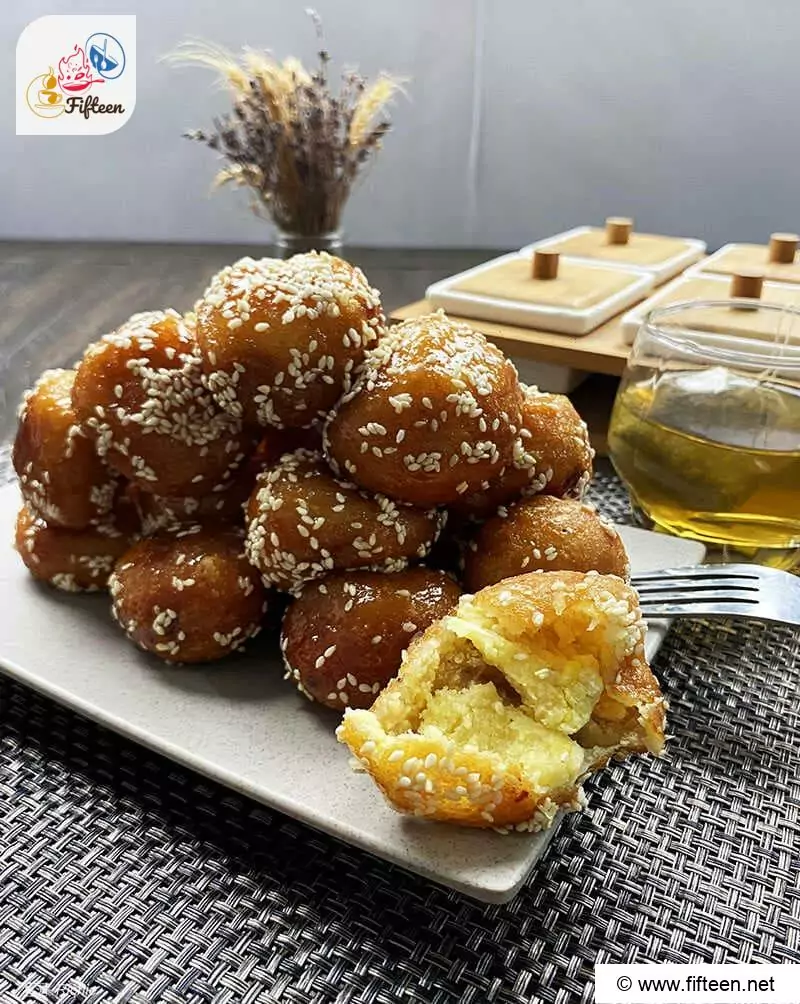
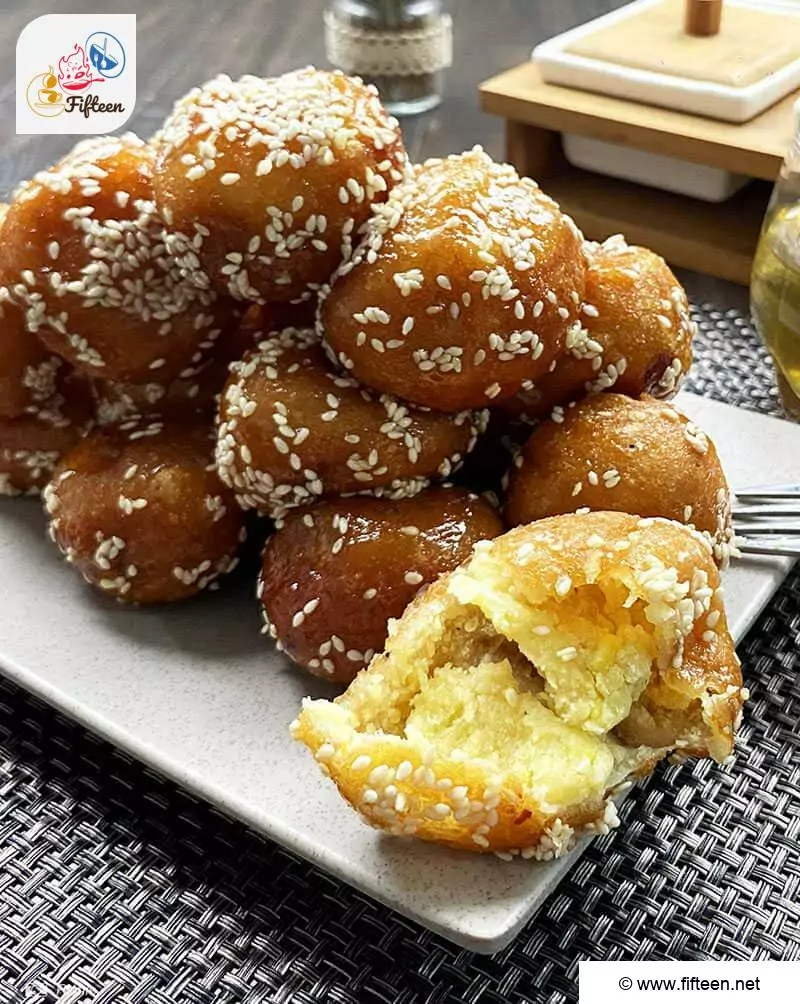
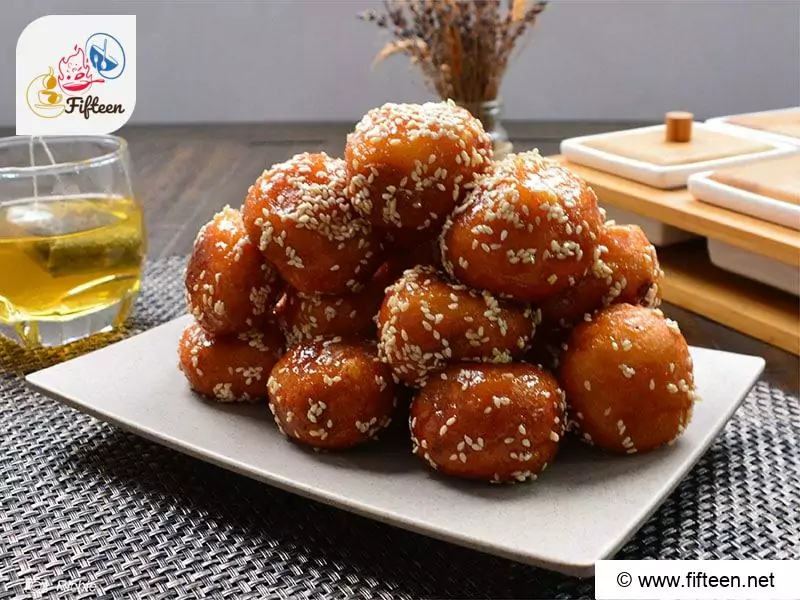
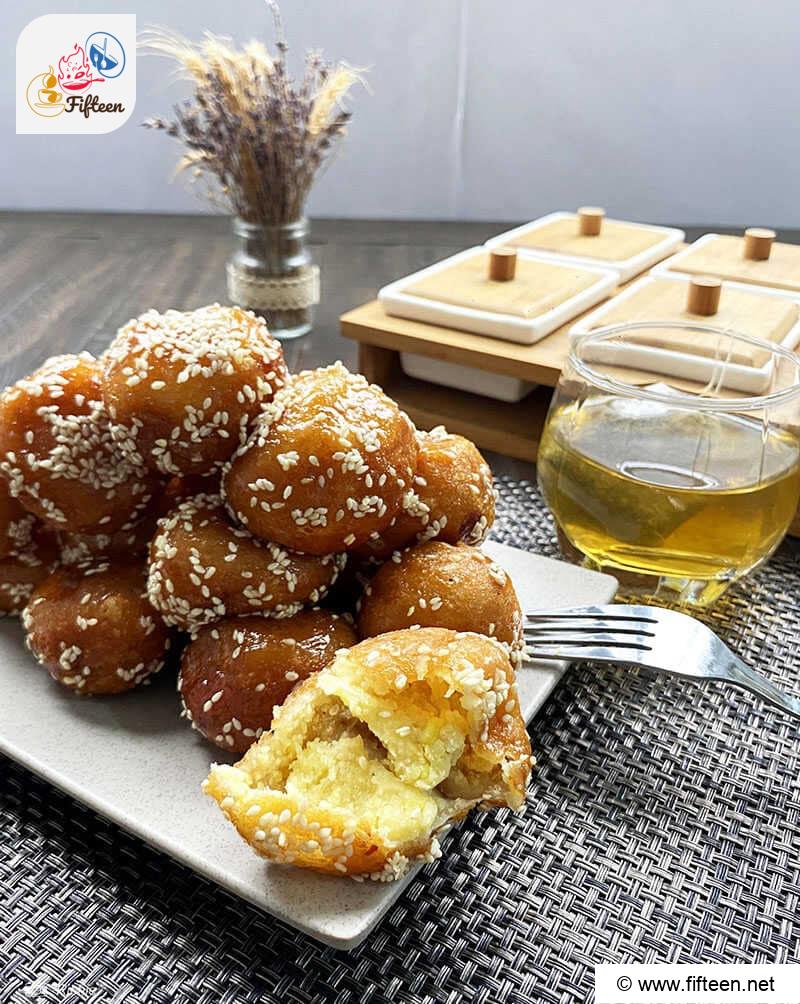
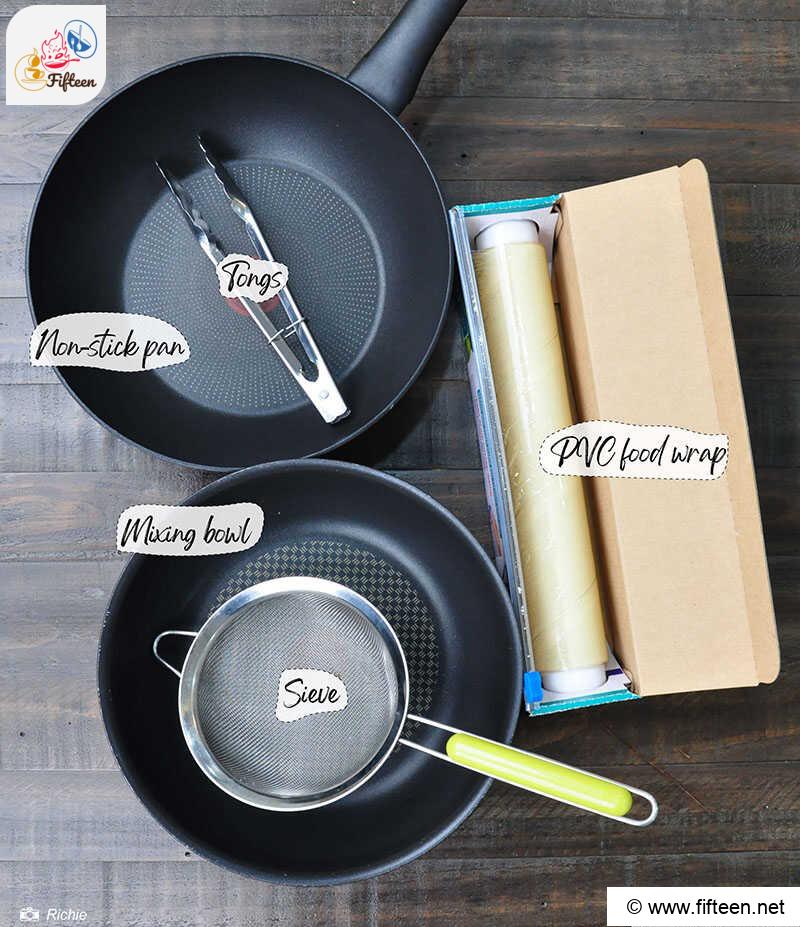
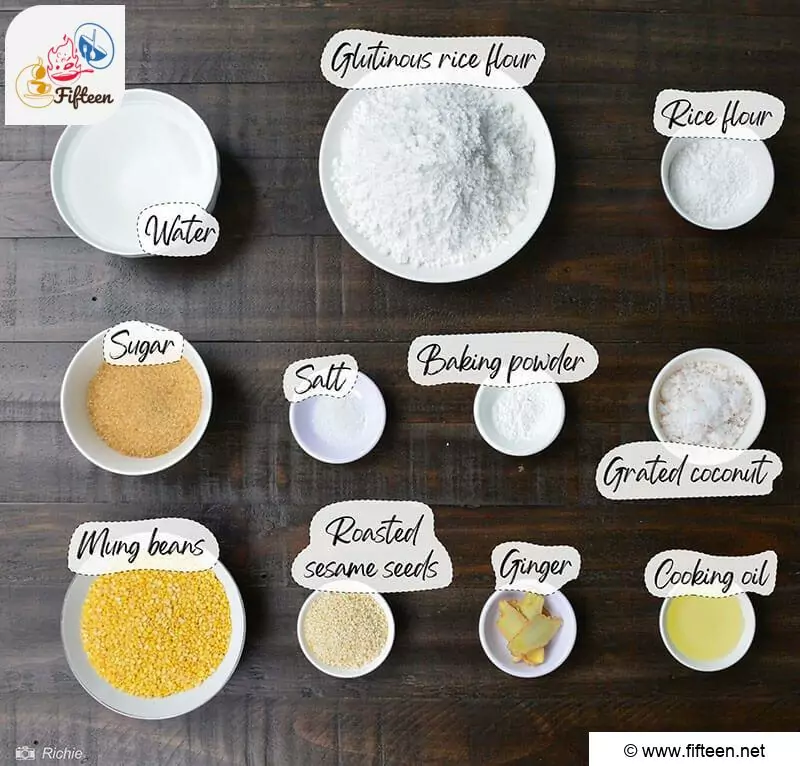
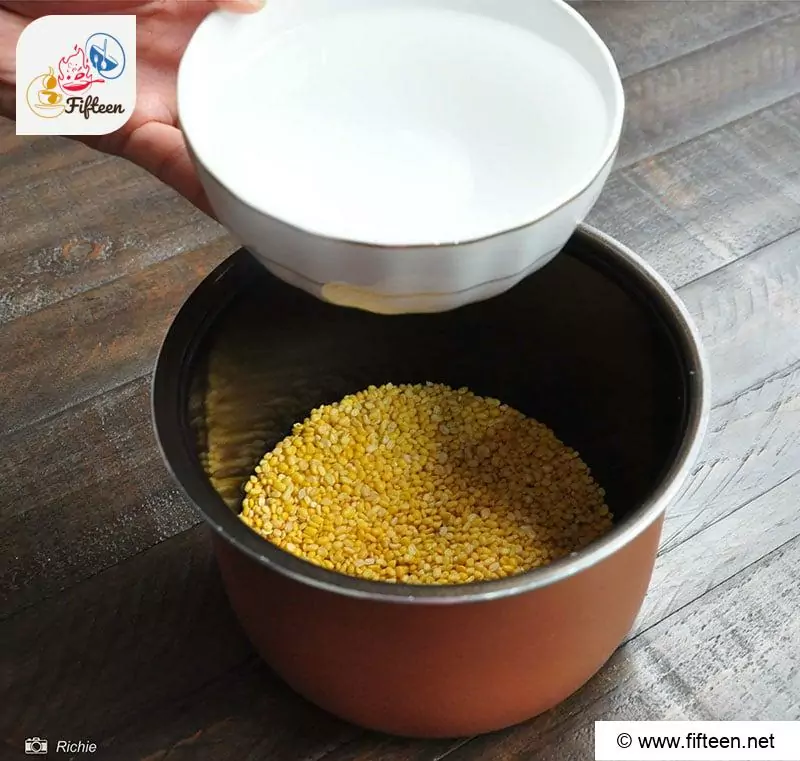
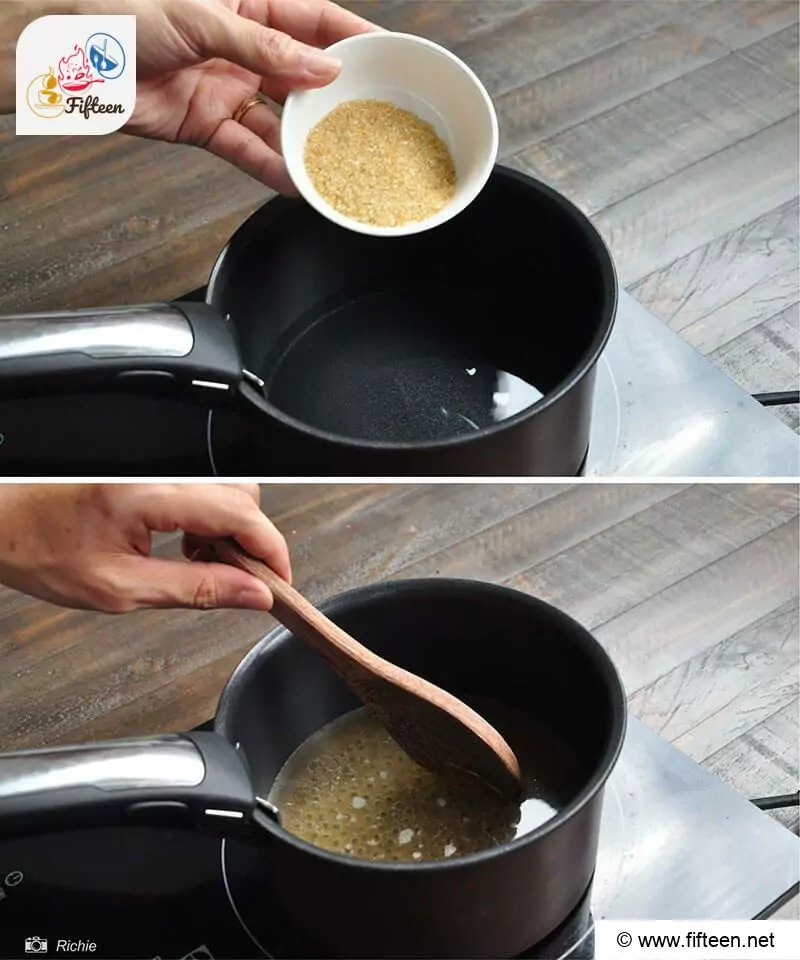
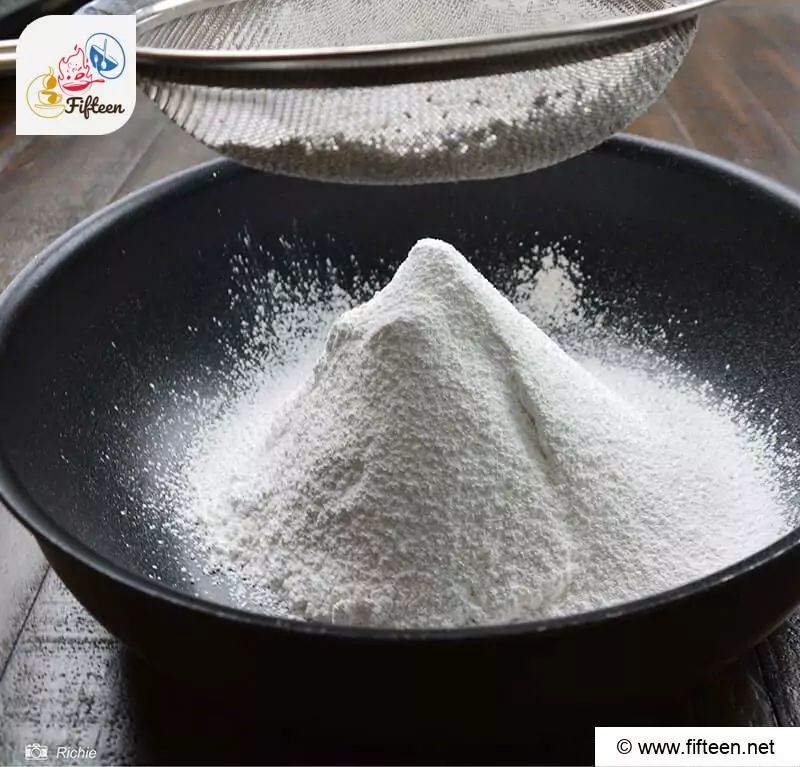
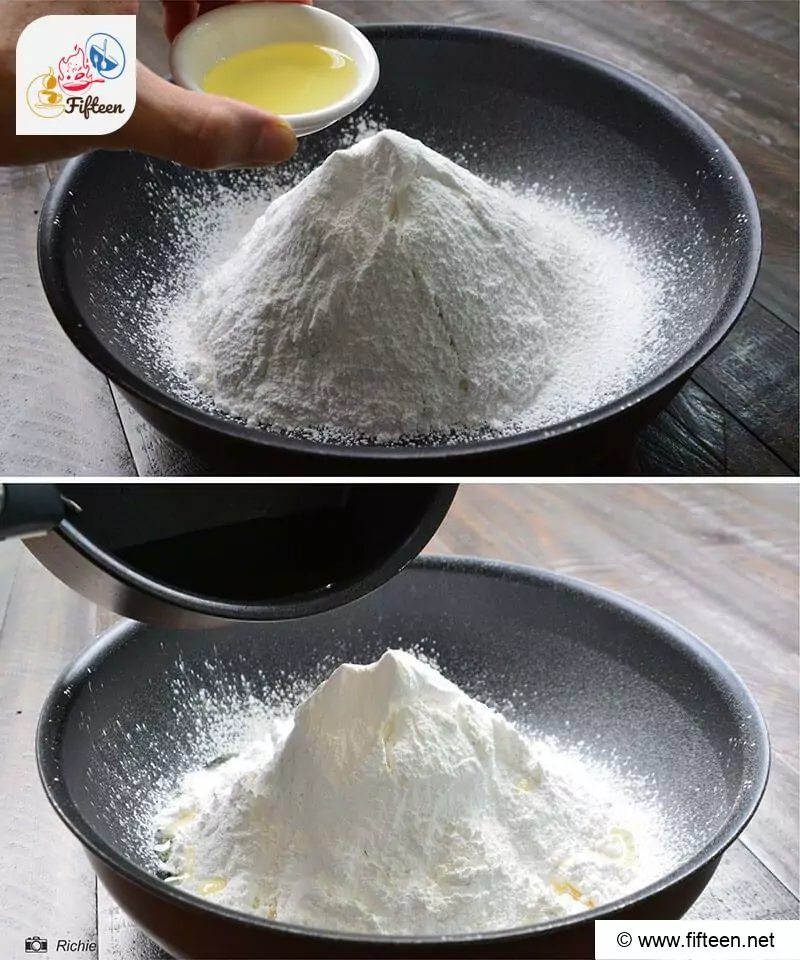
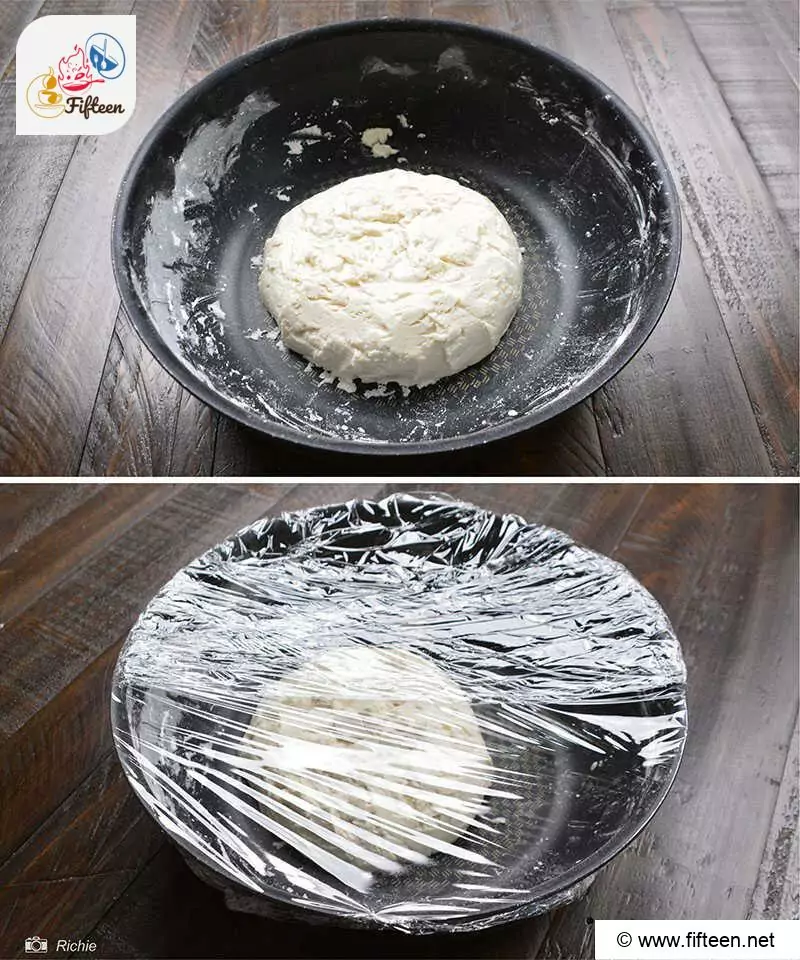
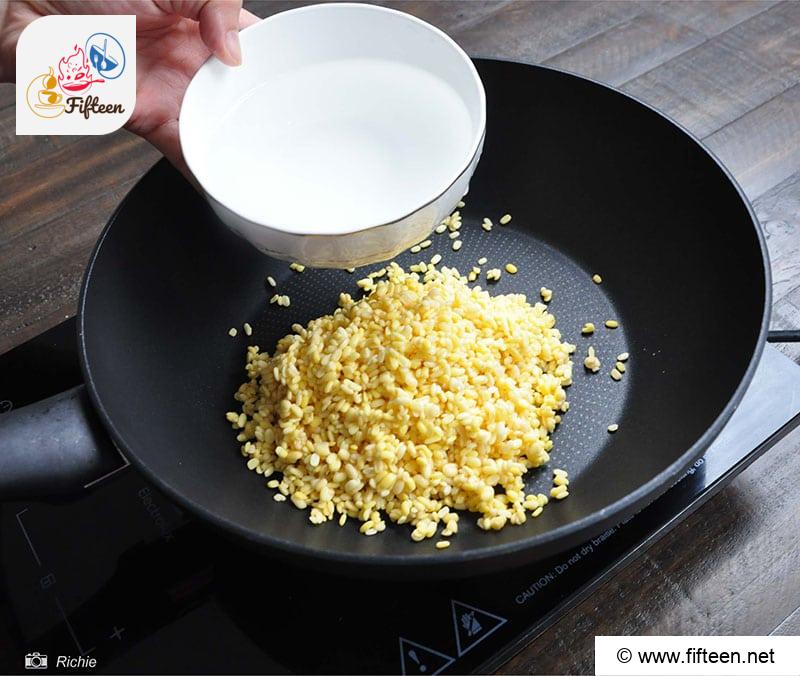
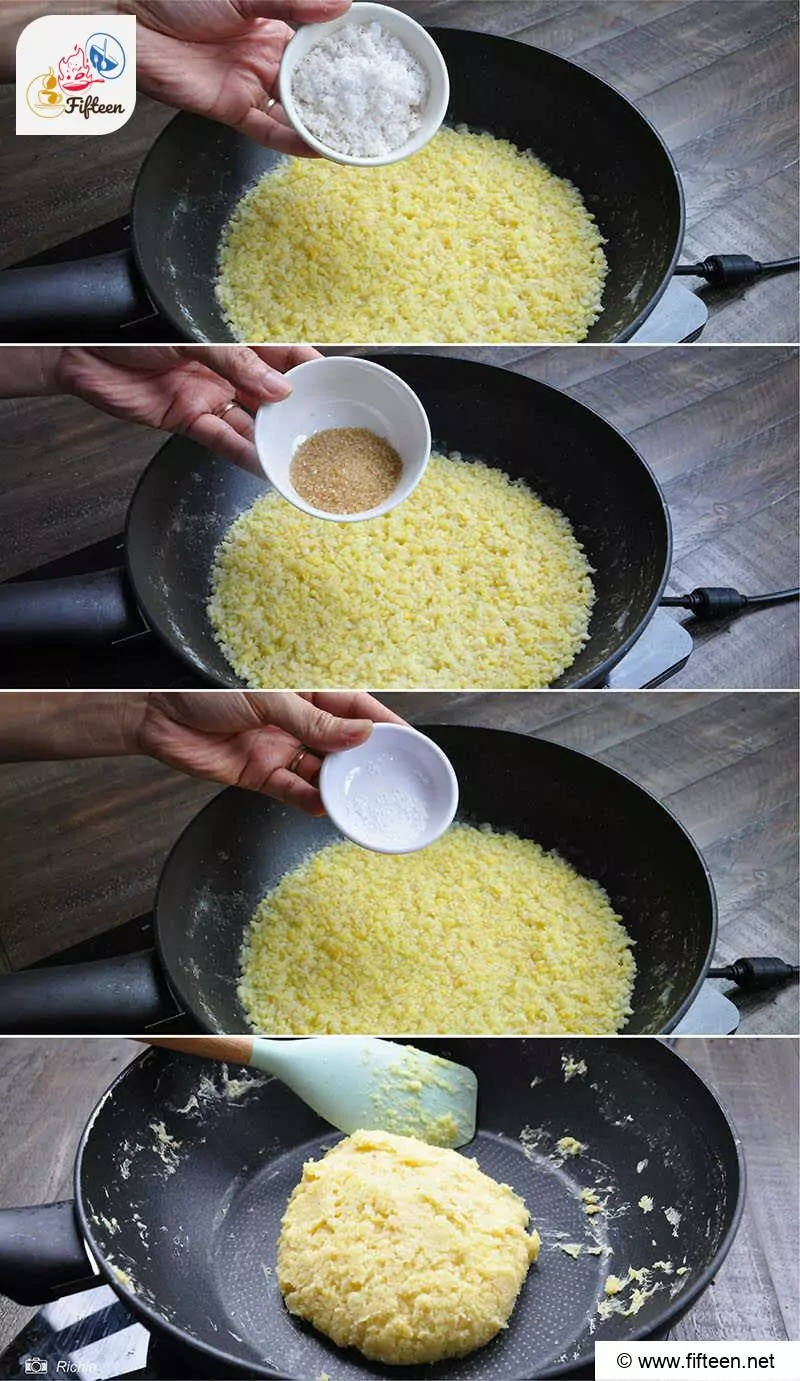
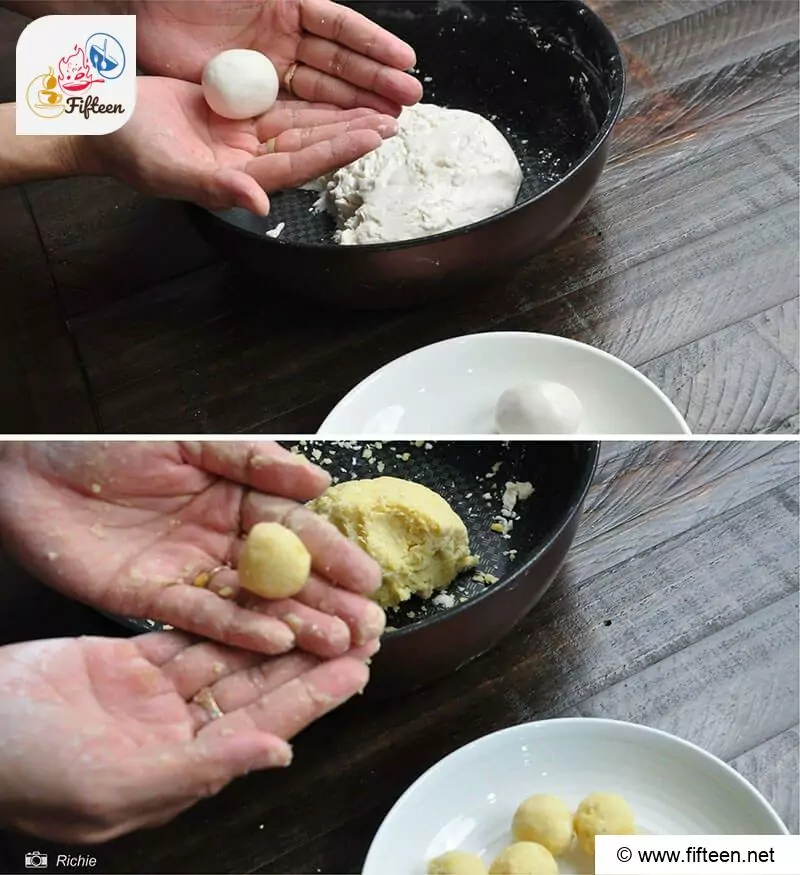
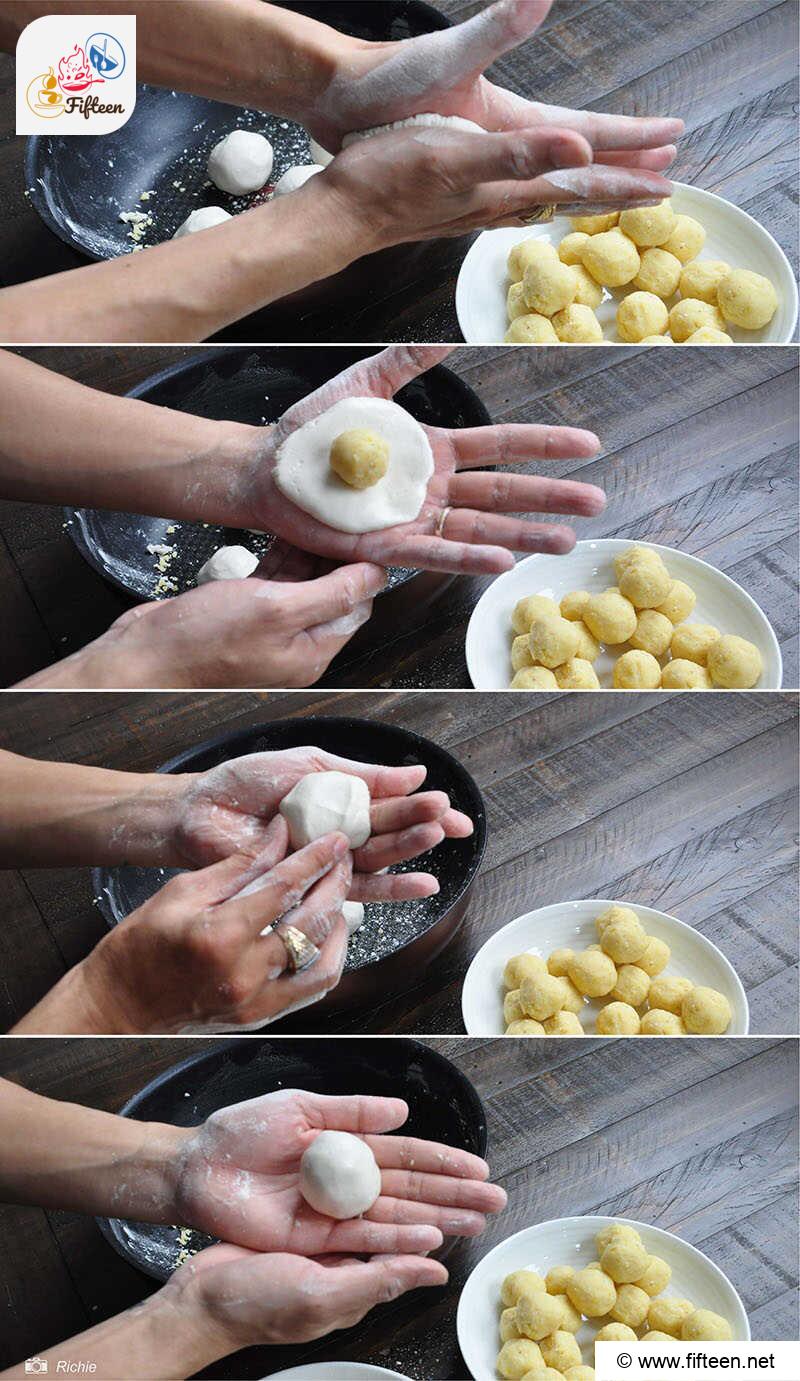
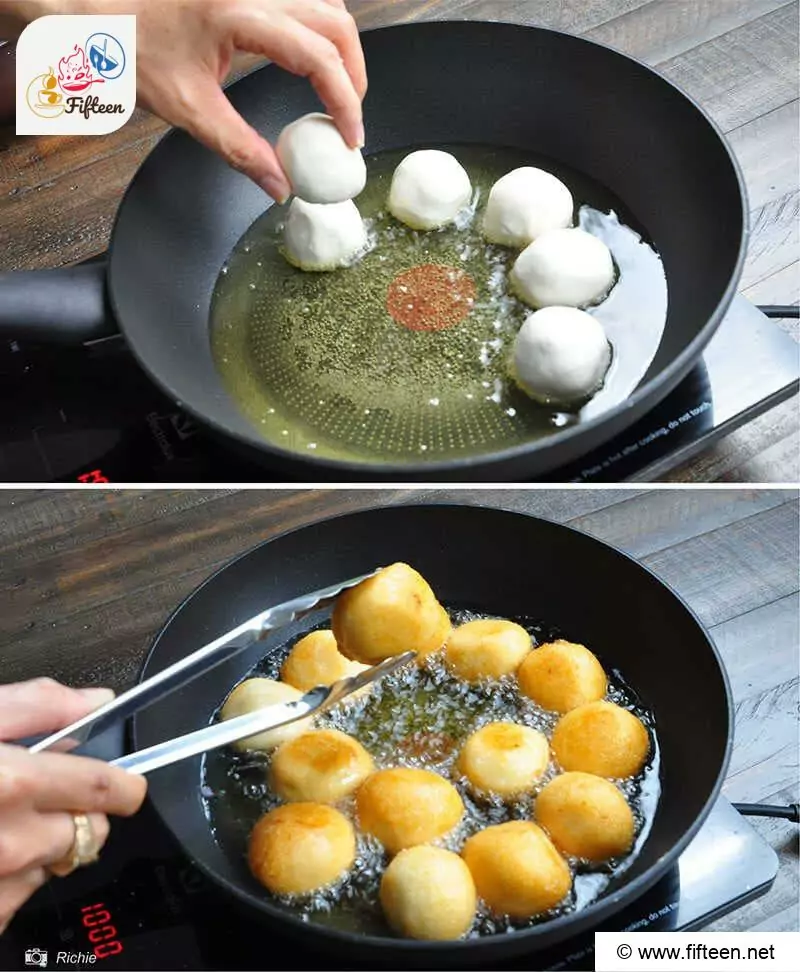
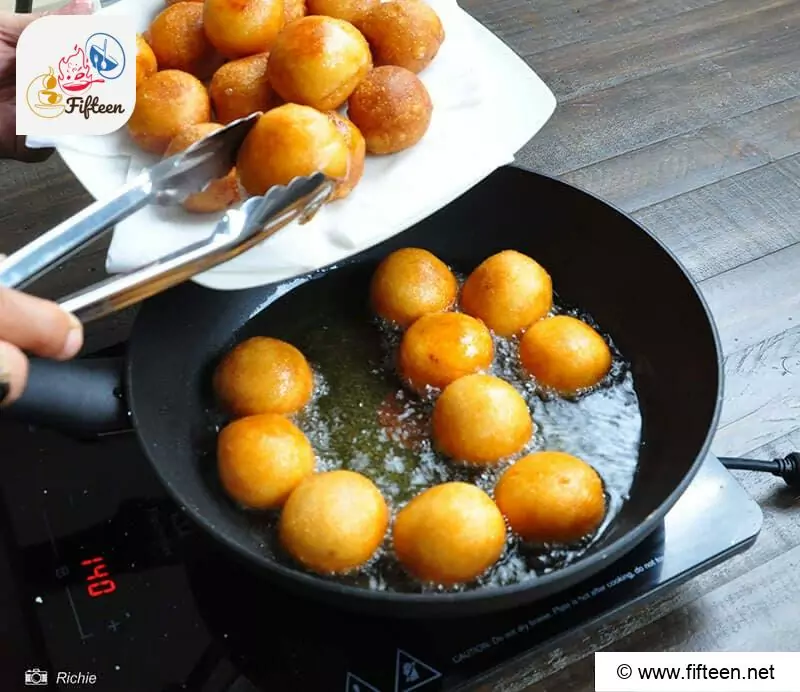
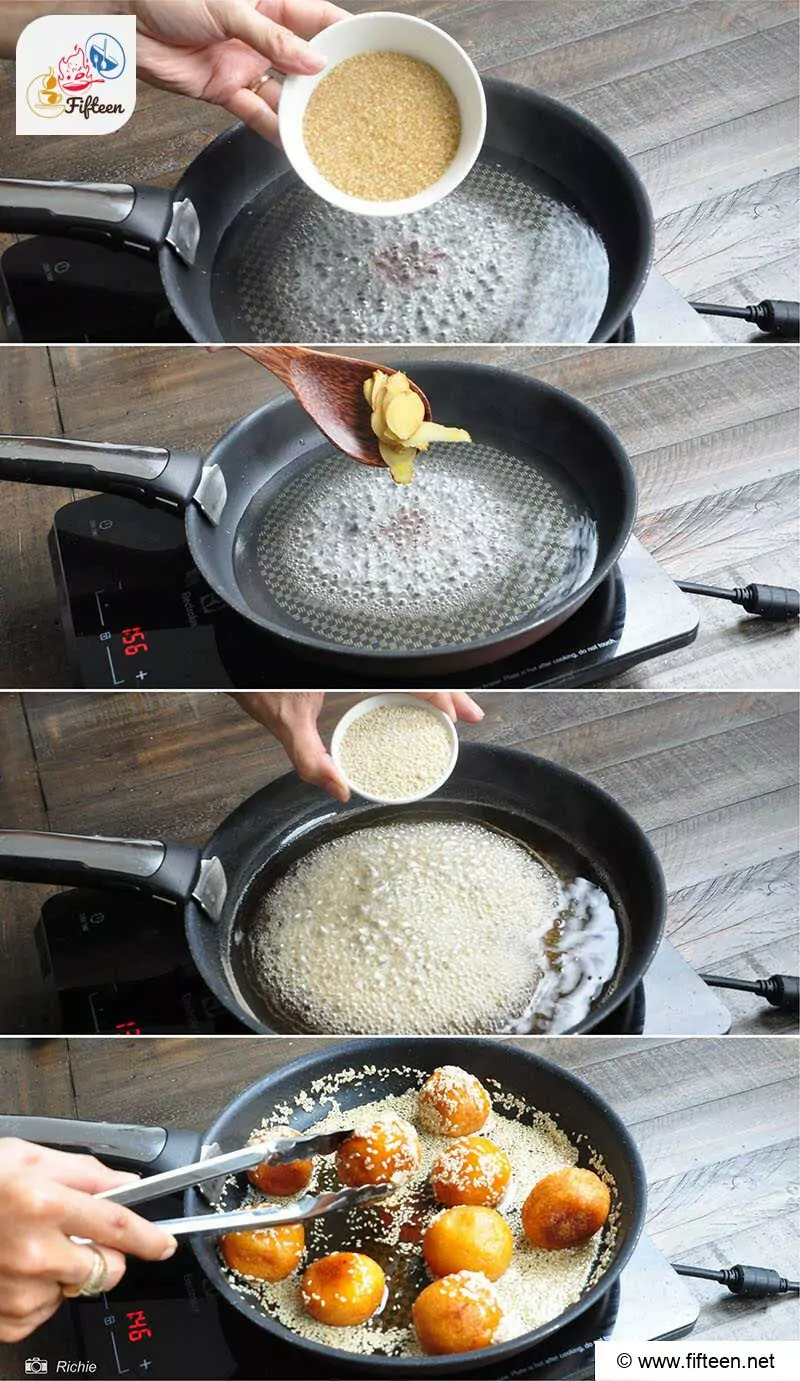
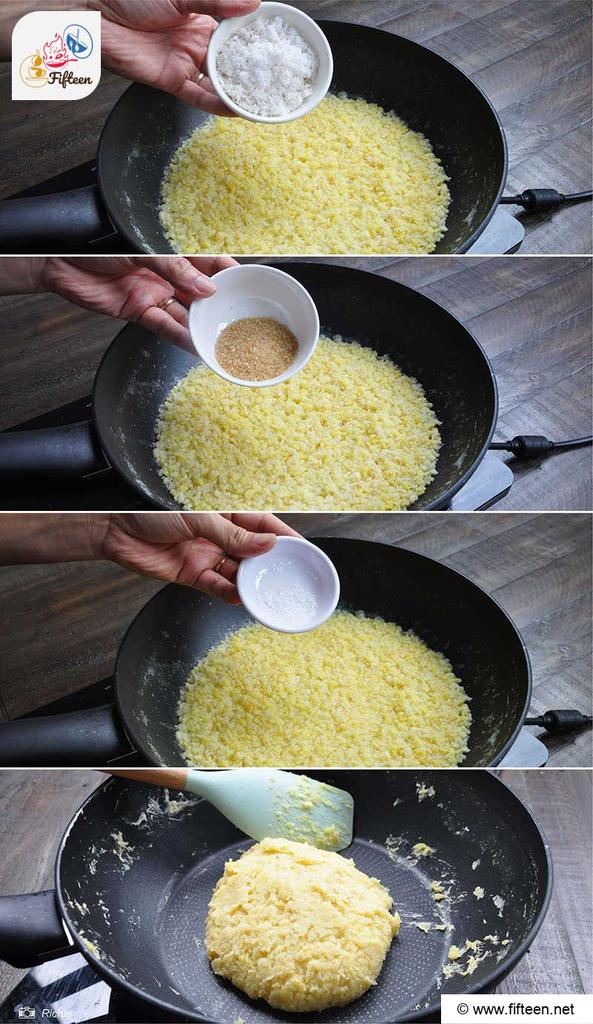
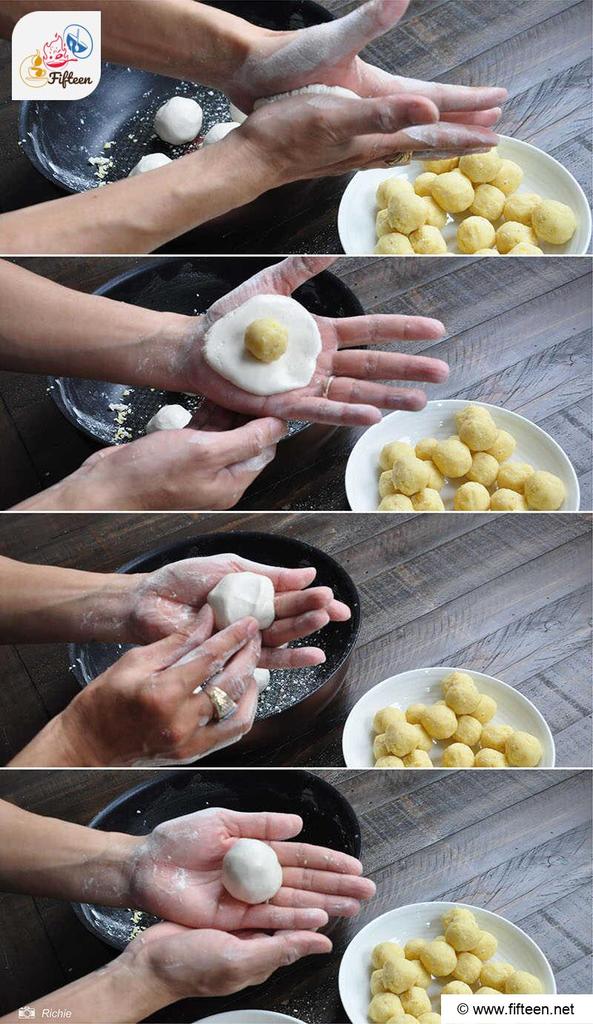
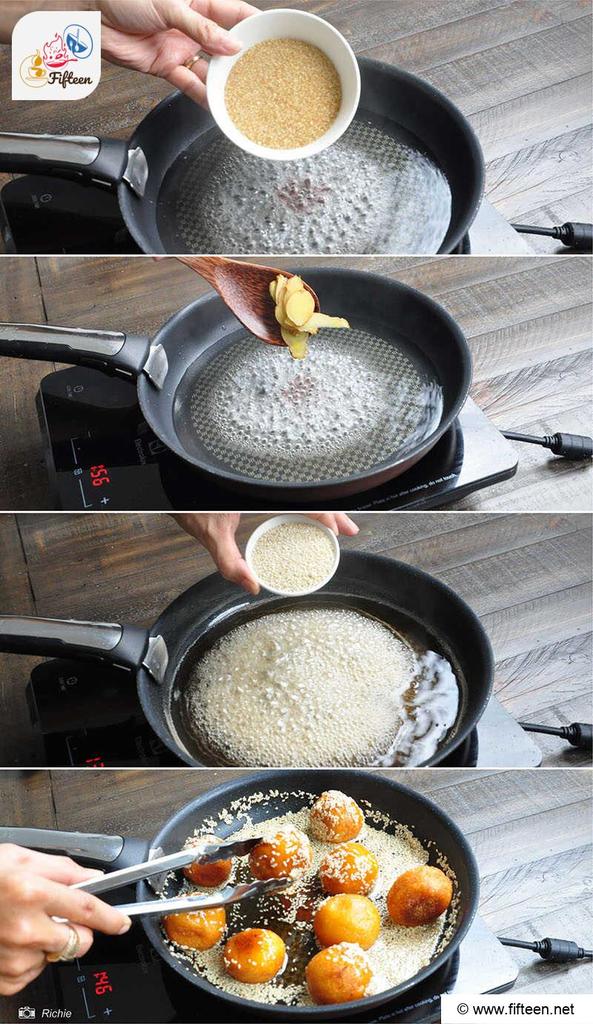
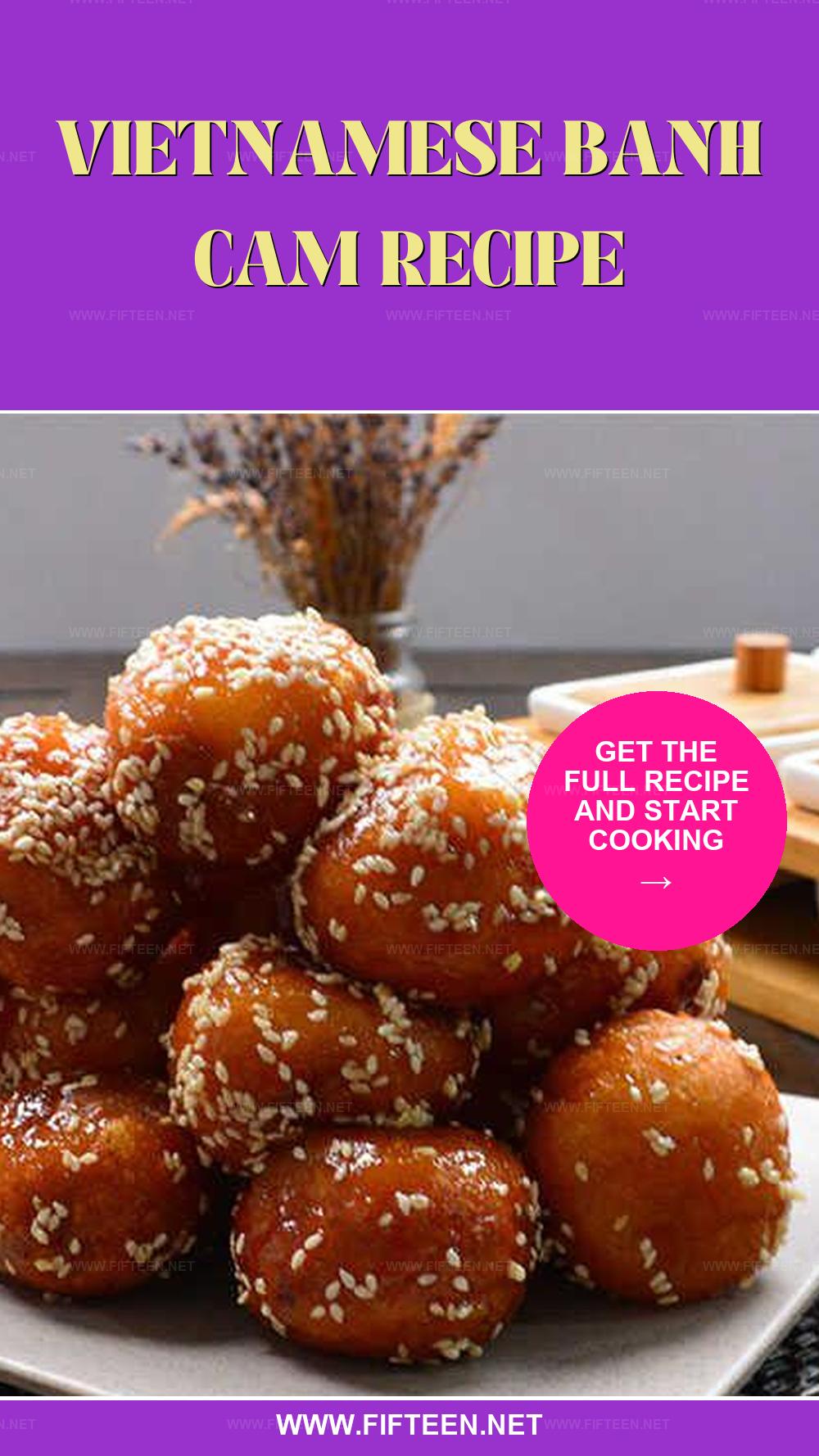
Richie
Content Writer
Expertise
Home Cooking, Meal Planning, Food Styling, Food Photography, Cooking-video Maker, Beverage Evaluation Expert
Education
Saigon Culinary Arts Centre, Ho Chi Minh City, Vietnam
Vietnam Australia Vocational School (VAAC), Hanoi, Vietnam
Richie, based in Ho Chi Minh City, Vietnam, is a dynamic Content Writer with a talent for capturing the essence of culinary art.
Richie specializes in creating visually appealing and tasty content, offering a new angle on Vietnamese and other culinary traditions. With a background in graphic design and a love for food styling and photography, he expertly combines beauty with food narratives, encouraging his audience to discover the culinary world through his imaginative perspective.